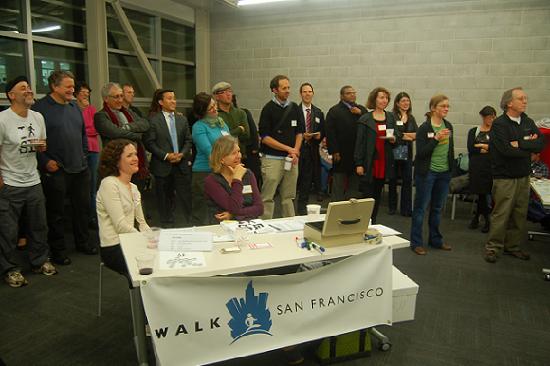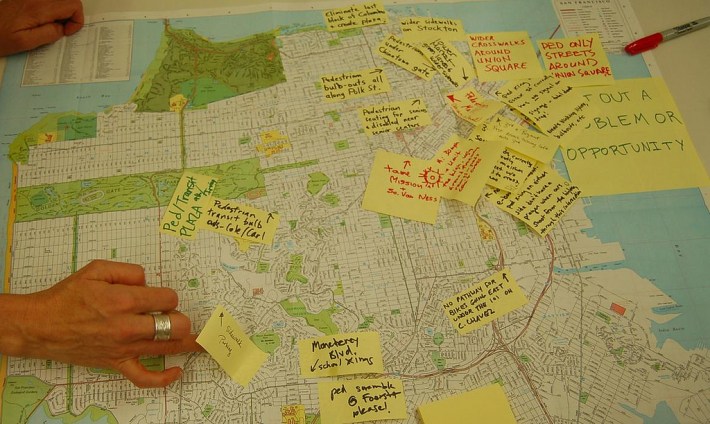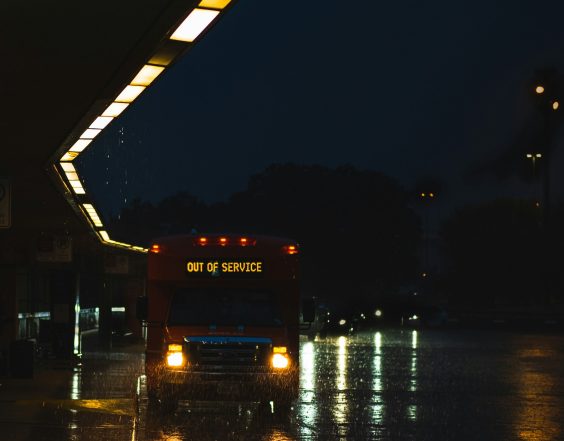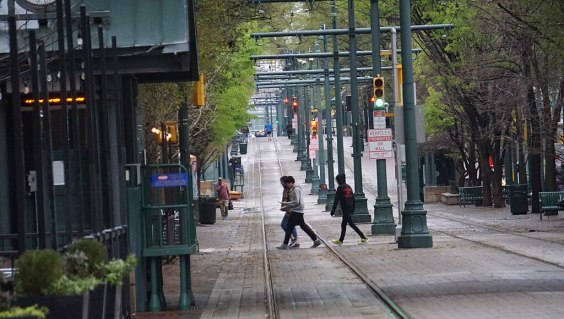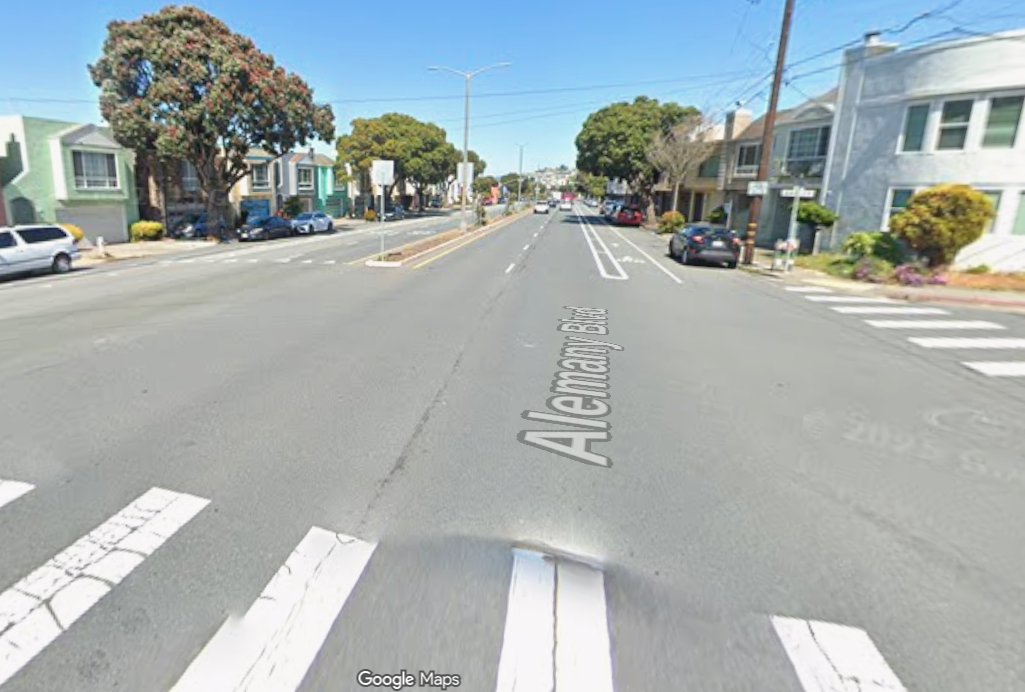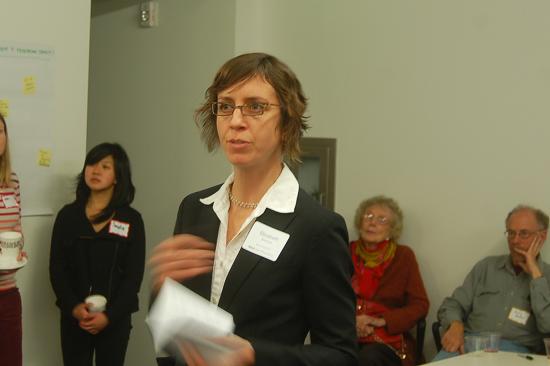
Pedestrian and livable streets advocates gathered Thursday for WalkSF’s Annual Member Meeting to celebrate the organization’s success and discuss how to improve walking conditions in San Francisco. Though the speakers -- including WalkSF executive director Elizabeth Stampe, State Senator Mark Leno and Board of Supervisors President David Chiu -- touted recent victories, including funding from vehicle fees via the recently passed Proposition AA and agreements with the upcoming CityPlace retail center, they also argued more action is needed to take on the city’s walkability challenges.
“Right now, 800 people a year are getting hit by cars in San Francisco. That’s more than 2 people a day,” said Stampe. “It’s been that way for several years, and I think we need to change it.”
Last month, the SFMTA released a report modeled on New York City’s Pedestrian Safety Study and Action Plan, though it failed to include the “action plan” part of the model. Stampe called for such a plan to reduce pedestrian crashes, make the streets safer to walk and increase physical activity.
Supervisor David Chiu pledged to push city agencies to fulfill their mandate to improve safety conditions. “What I committed to [advocates in my district] is that in the very first meeting of our County Transit Authority next year, I am going to be calling for a study of what our city has been doing in the area of pedestrian safety to coordinate the efforts to not just think of this not just as a transit issue, but as a public health issue,” he said.
In addition to WalkSF’s pedestrian advocacy around physical safety improvements, the organization has campaigned to raise the visibility of pedestrians in the media. “We’re trying to change the conversation from being about blaming the pedestrian and more into sharing the streets and getting folks to recognize that people who are driving have more responsibility,” said Stampe.
In addition to working with Friends of Monterey Boulevard for a safer Sunnyside thoroughfare, they also led a pilot program for 15 mph school zones in that neighborhood.
“Those kids really want to walk,” she said. “We need to make it safer for them to do that.”
